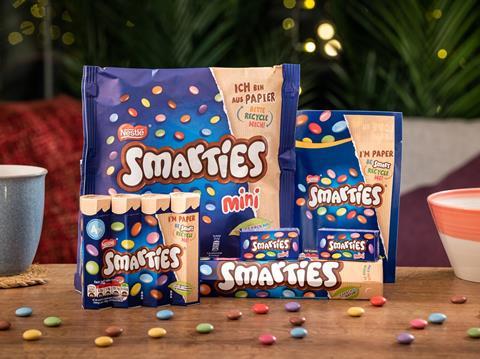To coincide with the release of the Ellen MacArthur Foundation’s Global Commitment 2022 report, Nestlé has shared some key metrics regarding its environmental performance.

Jodie Roussell, our Public Affairs Lead, Packaging & Sustainability, told us that the company has reduced the weight of its plastic packaging by 35%, from 1.5 million tons in 2019 to 0.98 million tons at the end of 2021, as a result of product portfolio shifts and packaging redesigns. In fact, it says it has moved beyond peak virgin plastic packaging and is consistently reducing virgin plastic year-on-year since its highest level in 2019.
Roussell explained that the company’s approach to packaging is based upon three pillars: less packaging; better packaging; better systems.
One way of tackling the first of these is through reuse. The company has also run over 20 pilots of reuse and refill systems in 12 countries, while admitting that more needs to be done in this sphere. To this end, it says it is actively working with retail partners to increase and scale up reuse and refill systems.
As to the second focus, ‘better packaging’: As of 2021, one quarter of Nestlé’s plastic packaging that had previously not been designed for recycling had been improved and redesigned so that it could be recycled – including an increasing shift towards monomaterial solutions and the use of paper where possible. At the same time, it says it has also phased out non-recyclable materials. As of the end of 2021, the company informs us that 80% of its plastic packaging had been designed for recycling, i.e. could be recycled in dedicated recycling facilities. It says it expects to reach more than 95% by 2025 and remains committed to achieving 100%.
When it comes to building ‘better systems’, Nestlé has also stressed the importance of supporting dedicated recycling infrastructure – the lack of which is identifies as the ‘main barrier to a waste-free future’. It is therefore actively advocating for a legally binding Global Plastics Treaty and new, harmonized national regulations.

















No comments yet